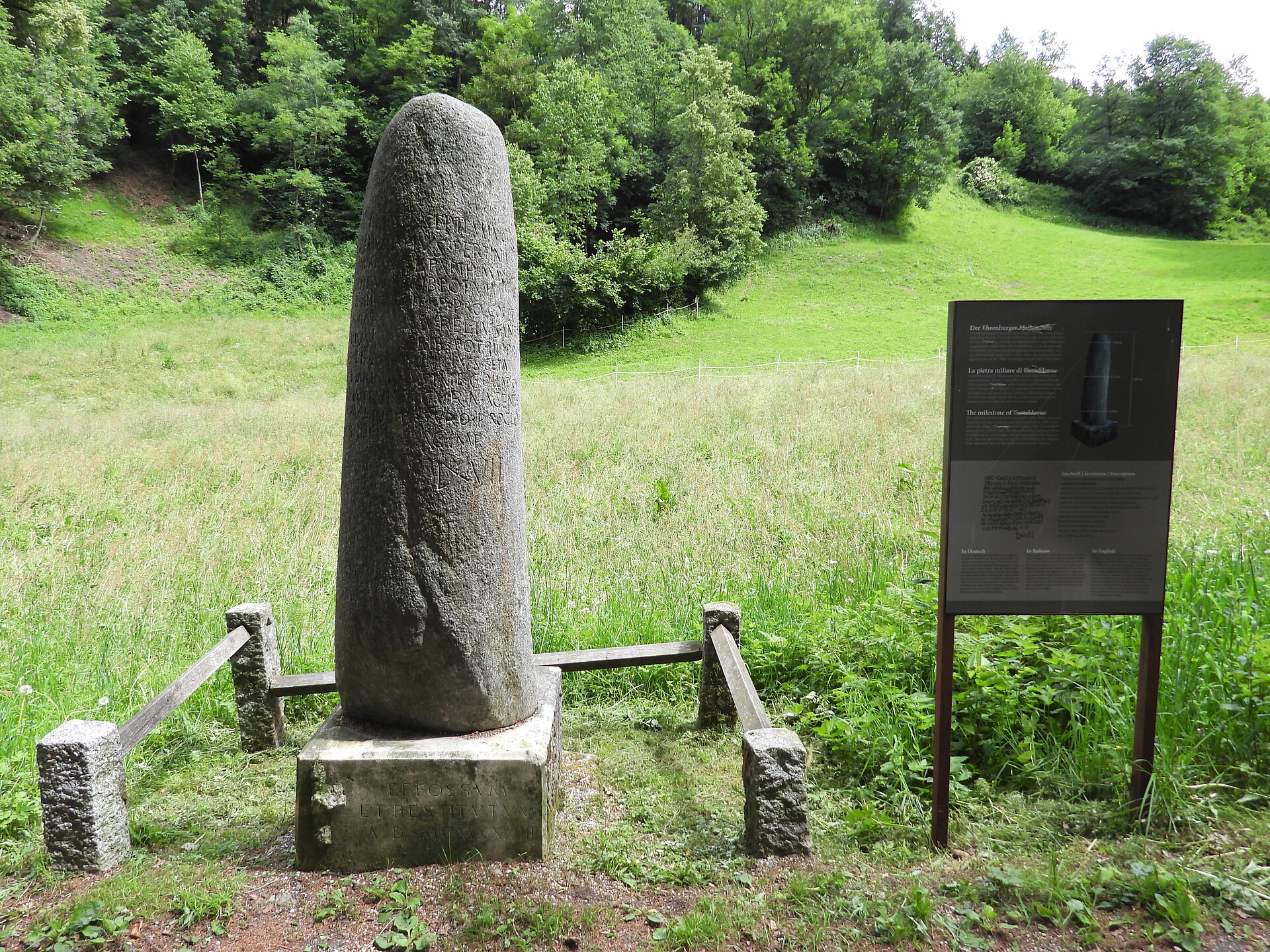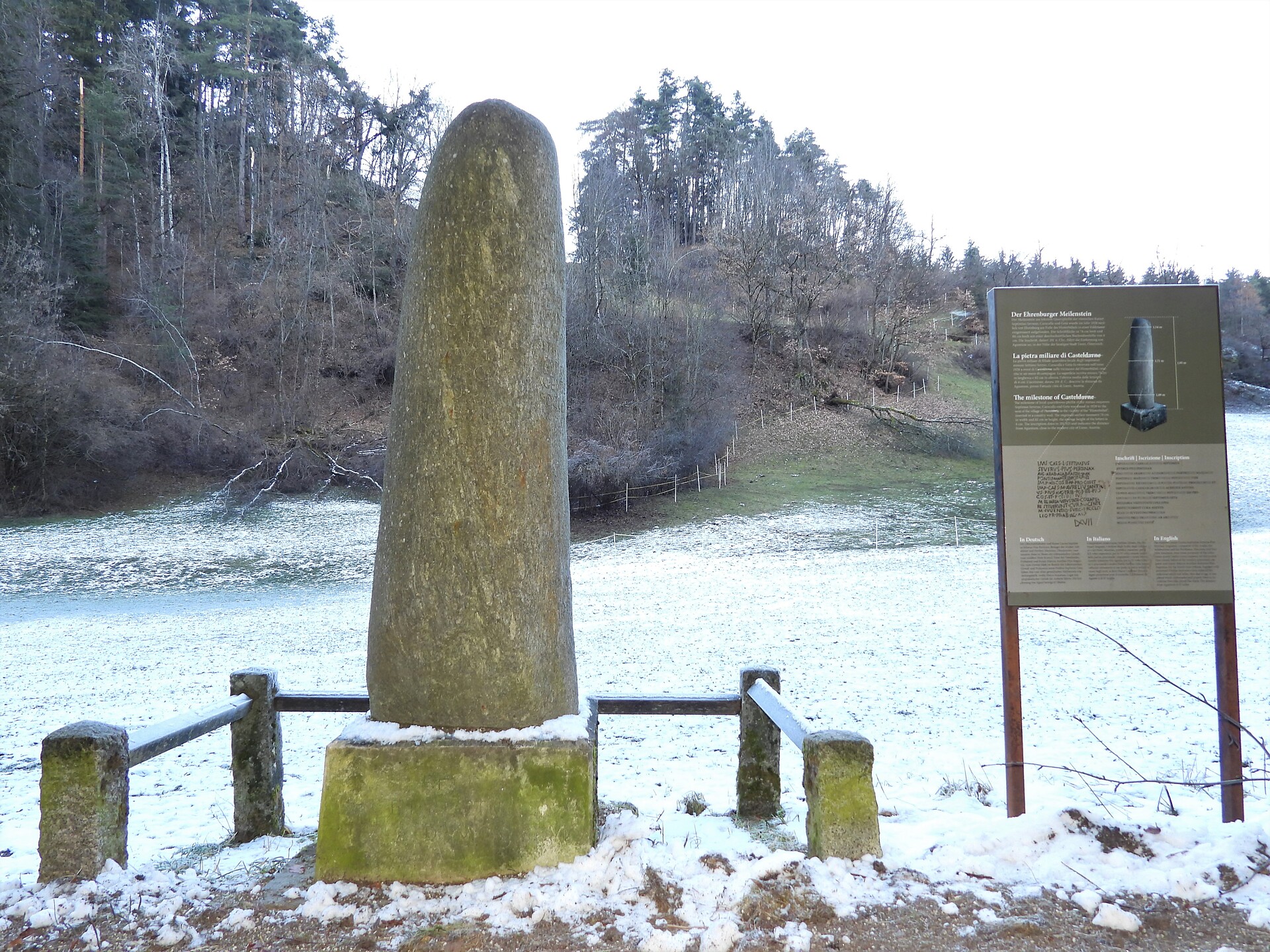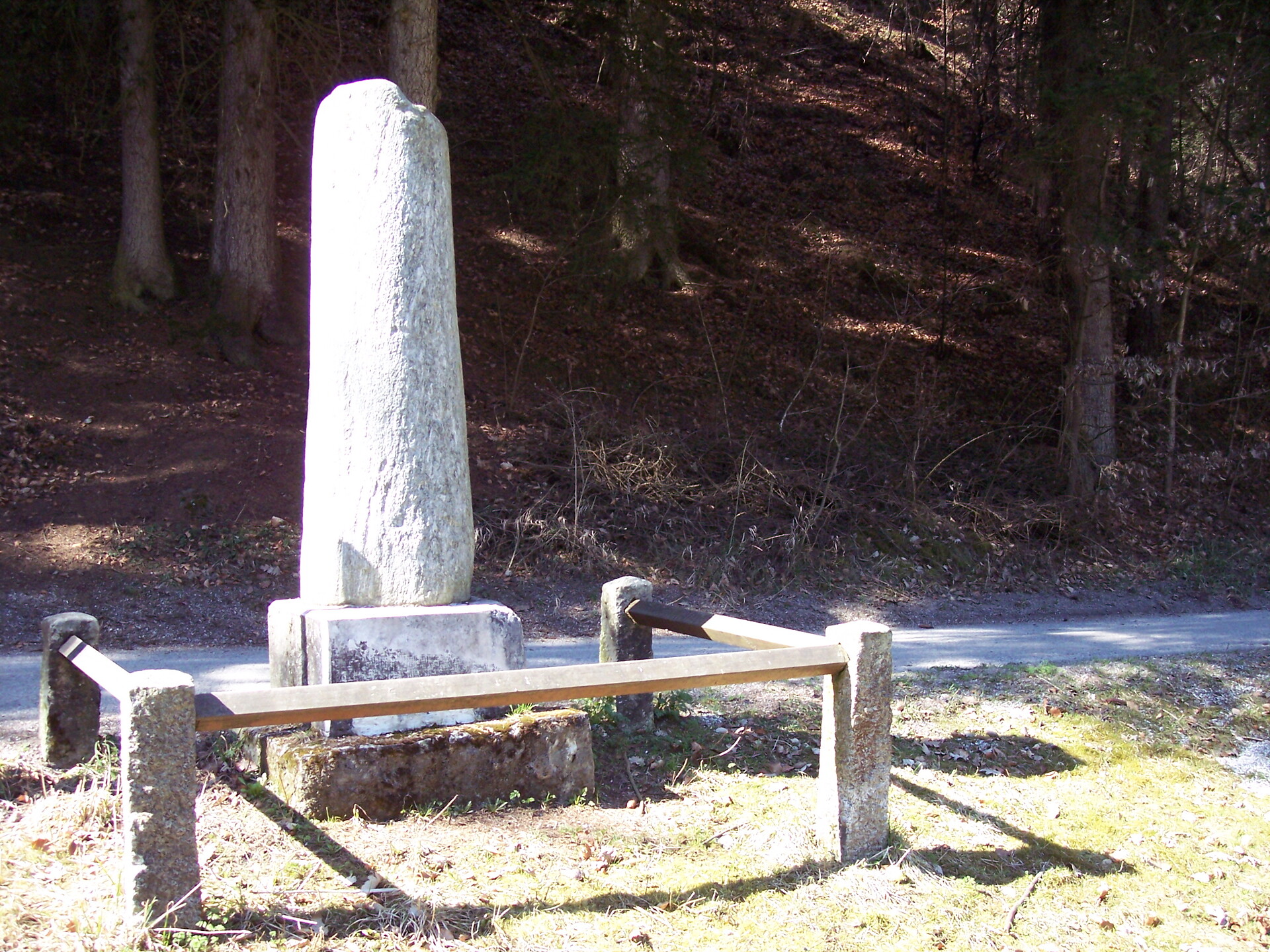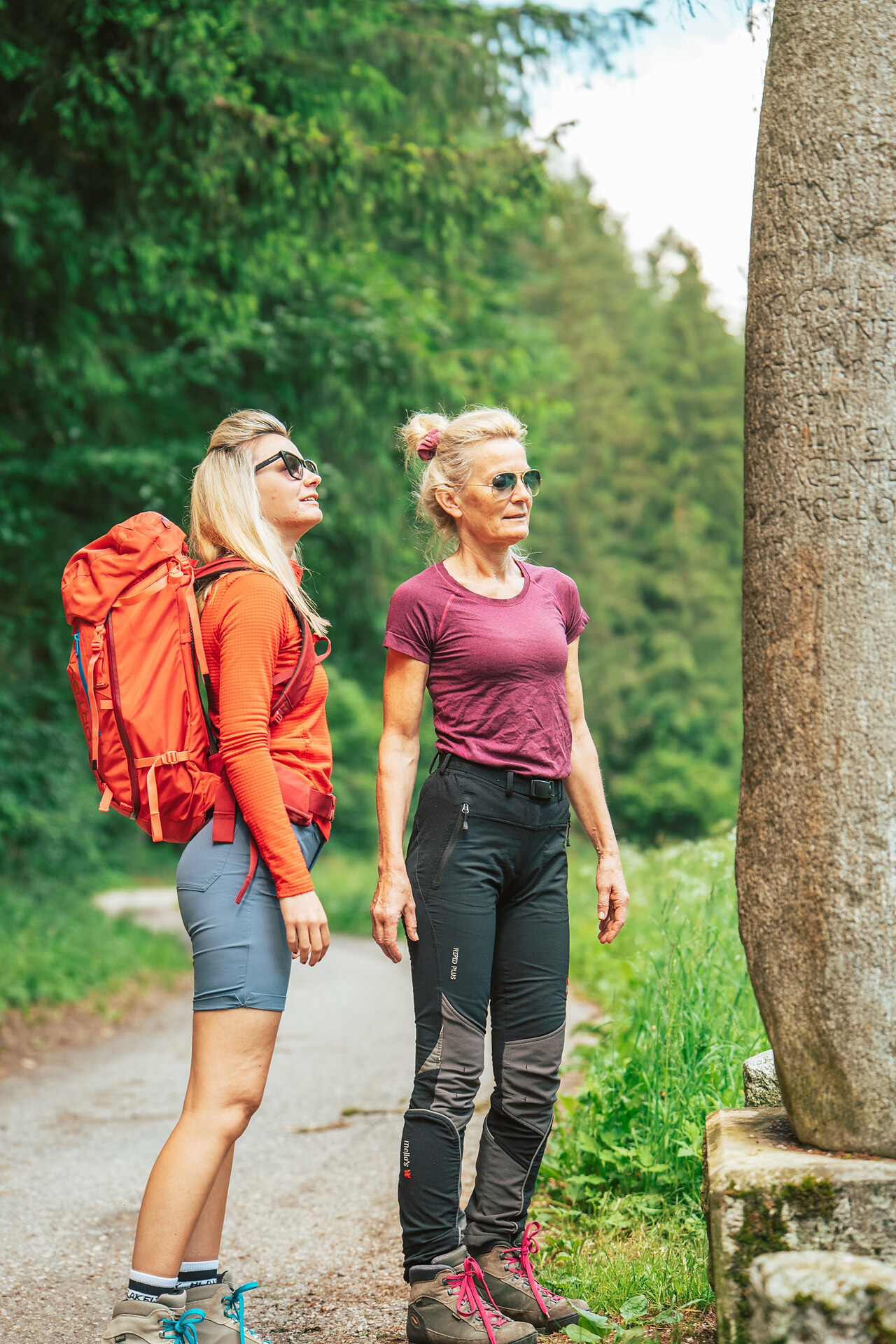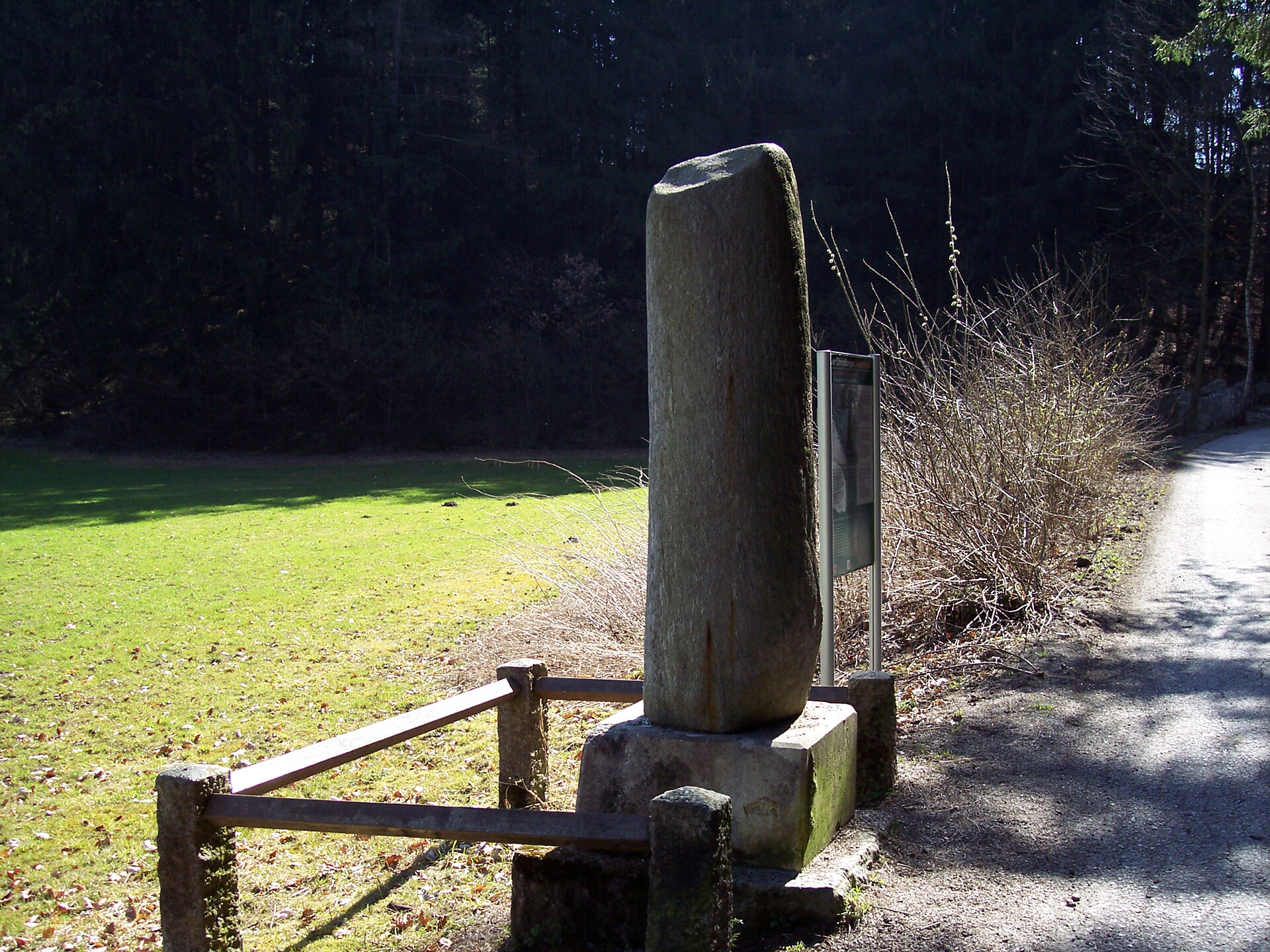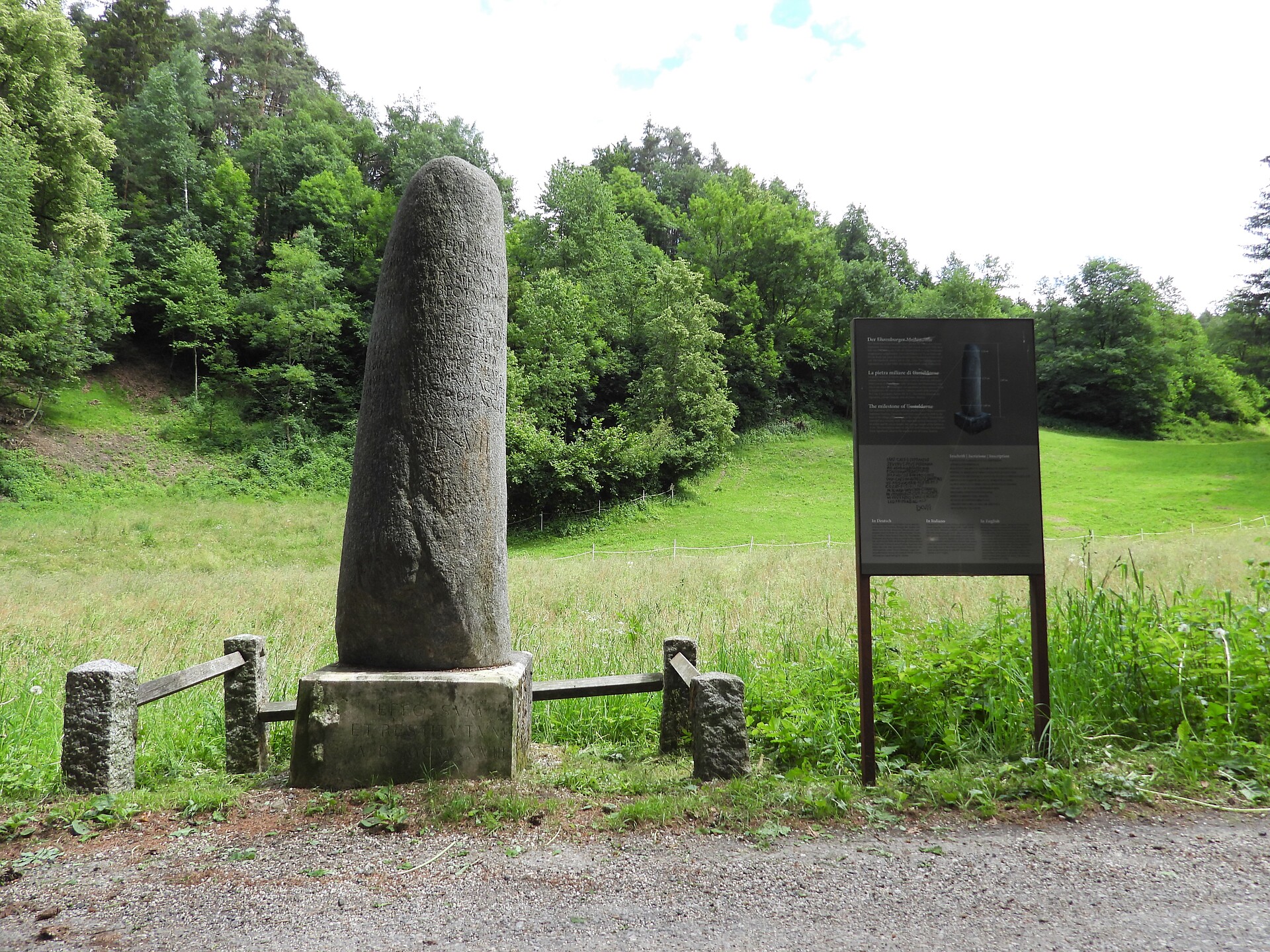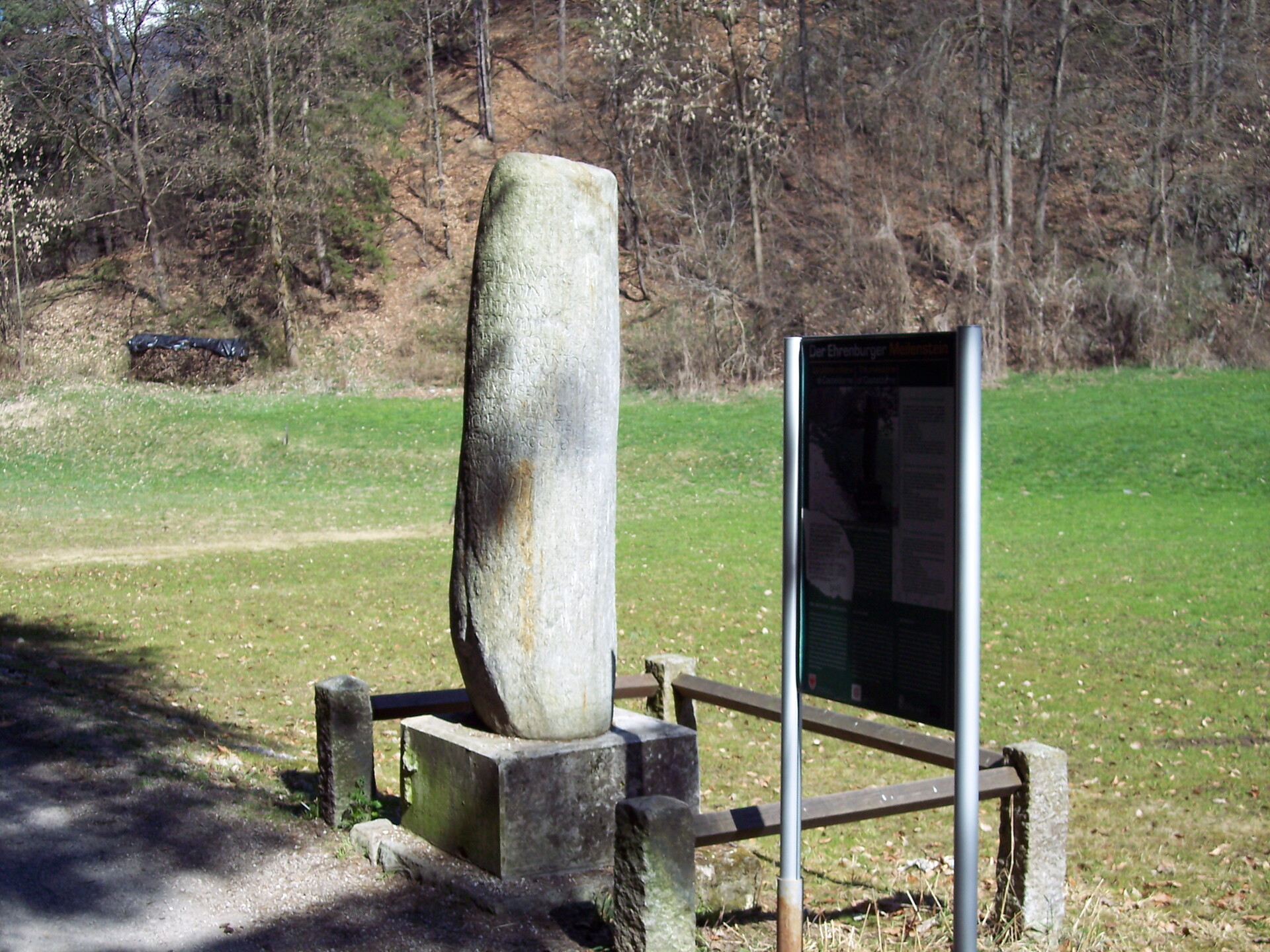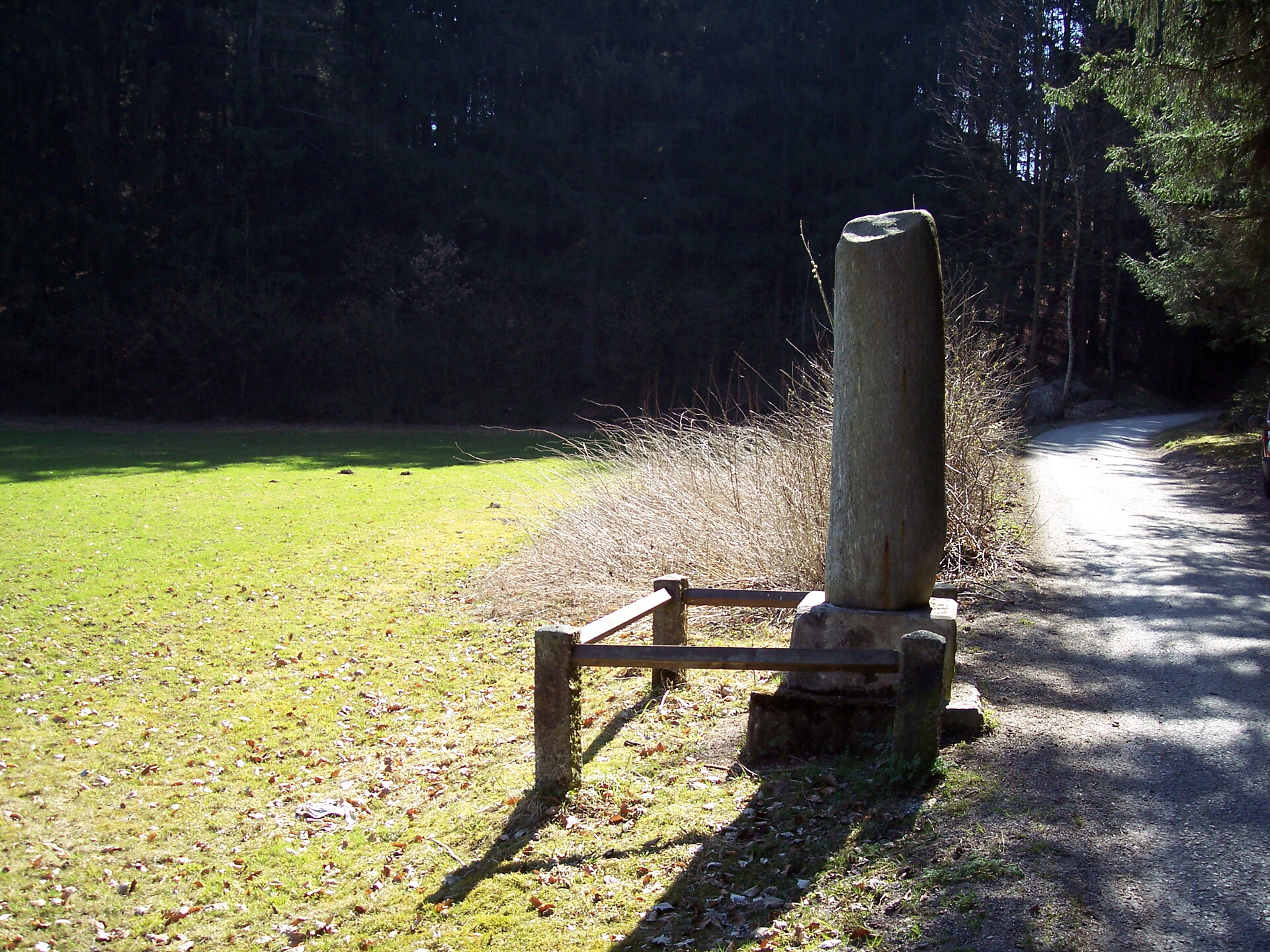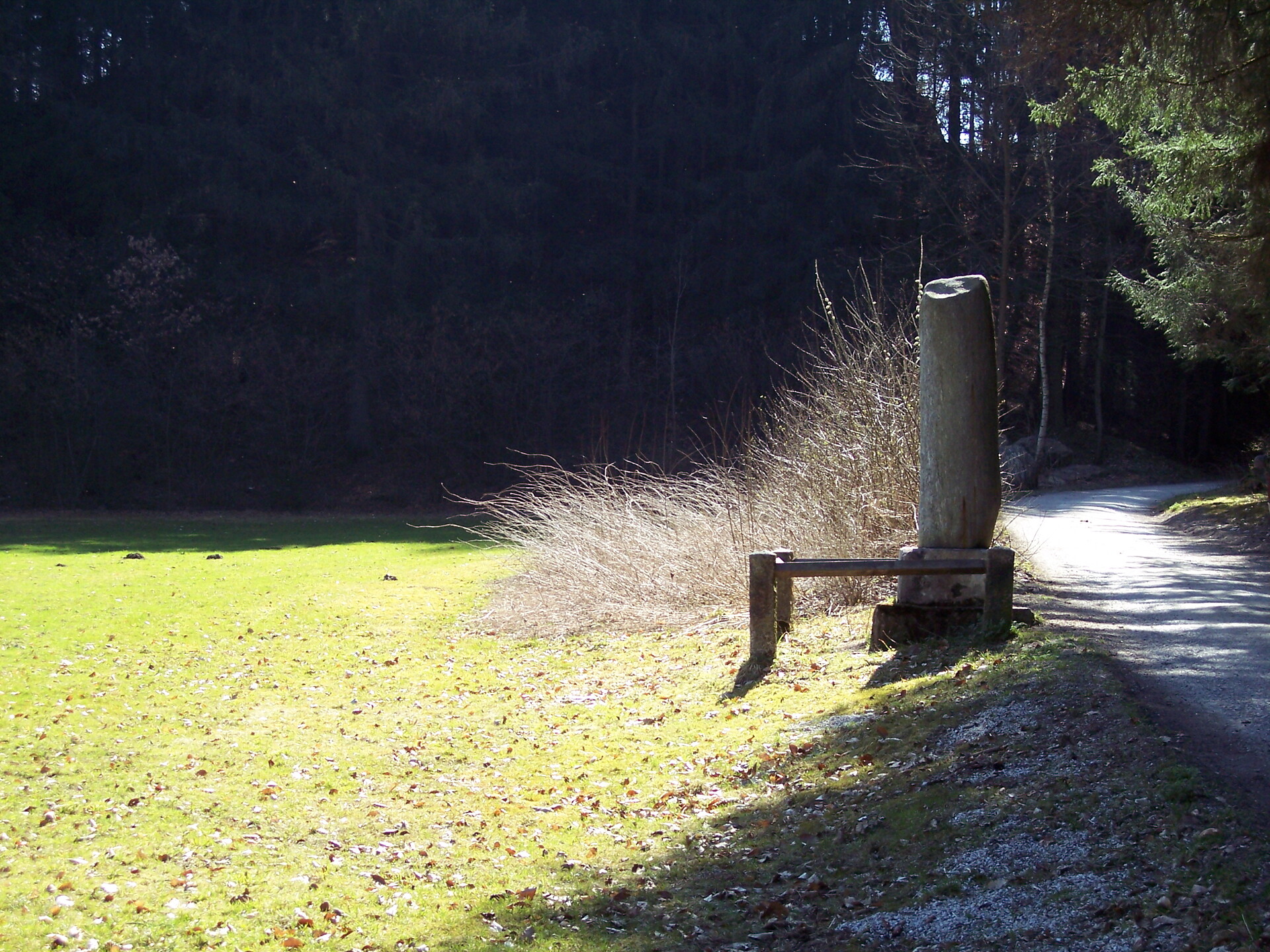The milestone of the roman emperors Septimus Severus, Caracalla end Geta was found in 1928 to the west of the village of Casteldane- Italy in the vicinity of the “Hinterbühel” and was inserted in a country wall. The measurements of the stone (local quartziferous porphyry) are as follows: Over-all height: 1.95 m Top circumference: 1.54 m Central circumference: 1.71 m Bottom circumference: 1.89 m The engraved surface measures 82 cm in height and 74 cm in width: the average height of the letters is 4 cm. The milestone dates back to 201 AD and indicates the distance from Aguntum, a roman town close to the modern city of Lienz-Austria. Starting point: Kiens (782 m) at the tourist office; parking facilities nearby, bus stop. Cross the main road (state road SS 49), and between the Gasthof Gatterer (inn) and the Sparkasse bank building head south down to the bridge across the River Rienz. Walk over the bridge and through the railway underpass and now always follow the No. 5 blue-and-white trail markers: first walk east for about 300 m, then turn south and proceed on that path until you reach the first houses of Ehrenburg. From there continue on the tarmac road for about 100 m as far as the turn-off for the “Straße am Römerstein” (road). Now proceed in a westerly direction, always following the No. 5 blue-and-white markers to the milestone. From there initially keep heading west and subsequently take the track which runs north until you reach the road which runs parallel to the railway lines. From there walk east back to the Rienz bridge and to the starting point. Total walking time: about 1 ½ hours Standard: easy Summary: This walk is especially interesting from a botanical point of view since the vegetation is rich and varied.
